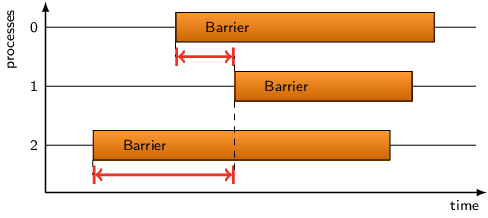

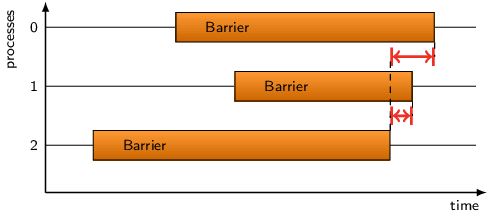


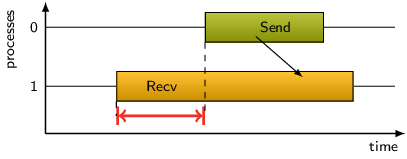
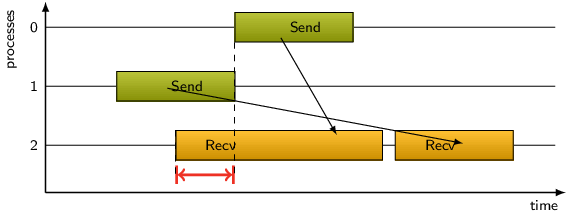


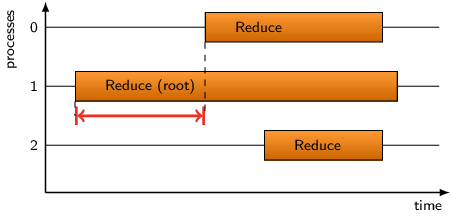
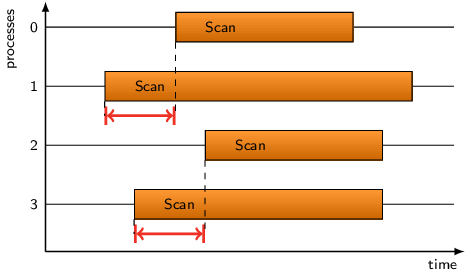
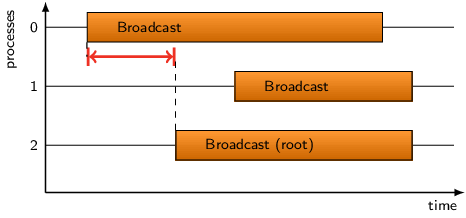
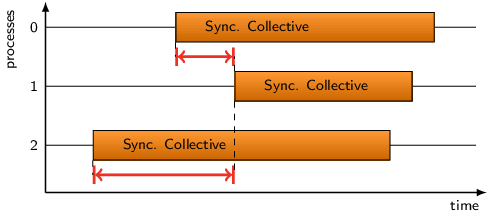
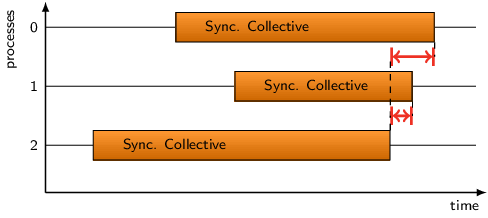
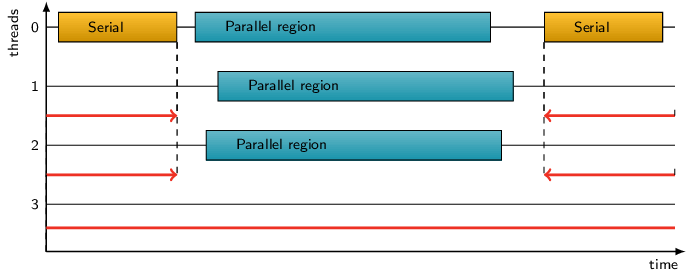
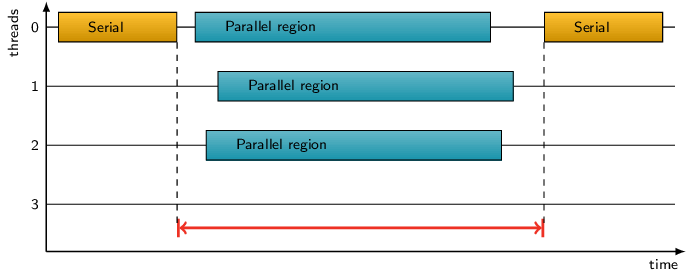
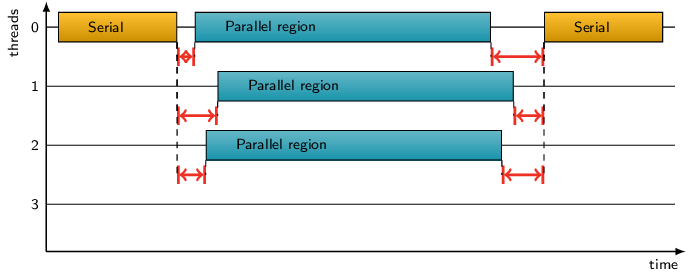
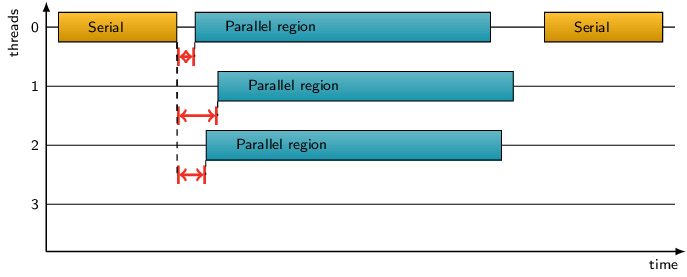








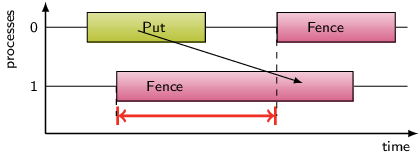
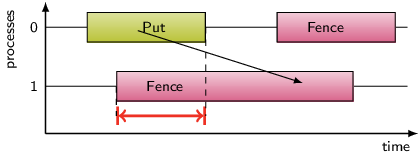
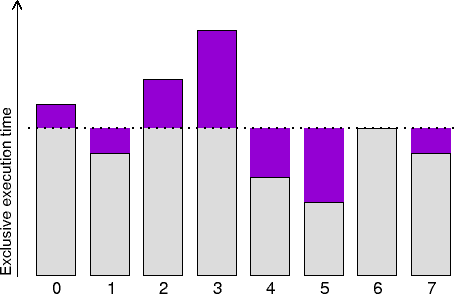
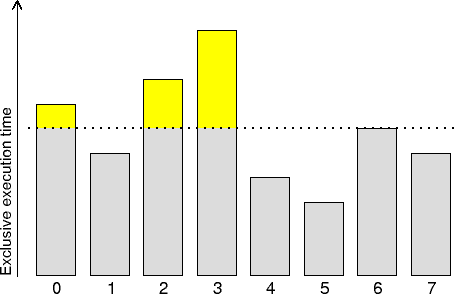
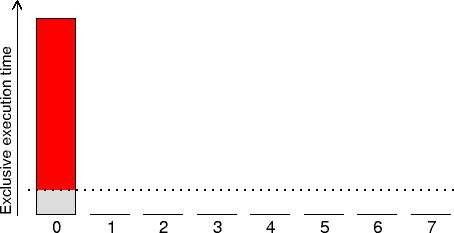
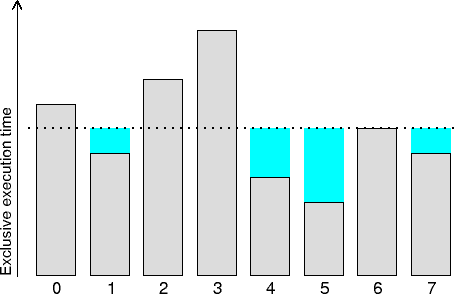
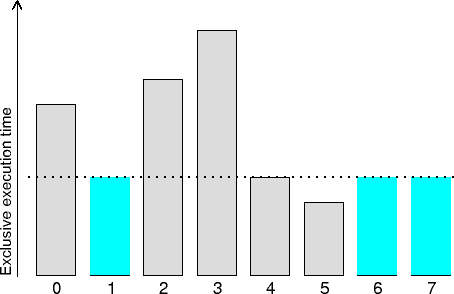
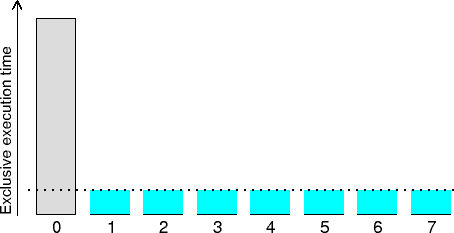

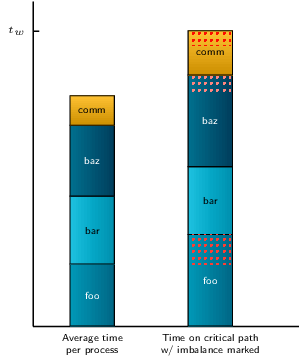
Delays fall into three main categories:
Compare with Late Sender Time to identify an imbalance pattern. Try to reduce workload in the affected call paths. Alternatively, shift workload in the affected call paths from processes/threads with delay costs to processes/threads that exhibit late-sender wait states.
Try to reduce workload in the affected call paths, or shift workload from processes/threads with delay costs to processes/threads that exhibit late-sender wait states. Try to implement a more asynchronous communication pattern that can compensate for small imbalances, e.g. by using non-blocking instead of blocking communication.
Compare with Late Receiver Time to identify an imbalance pattern. Try to reduce workload in the affected call paths. Alternatively, shift workload in the affected call paths from processes/threads with delay costs to processes/threads that exhibit late-receiver wait states.
Try to reduce workload in the affected call paths, or shift workload from processes/threads with delay costs to processes/threads that exhibit late-receiver wait states. Try to implement a more asynchronous communication pattern that can compensate for small imbalances, e.g. by using non-blocking instead of blocking communication.
Try to reduce workload in the affected call paths. Alternatively, apply OpenMP parallelism to more sections of the code.
Try to reduce workload in the affected call paths, or shift workload from processes/threads with delay costs to processes/threads that exhibit wait states. Try to implement a more asynchronous communication pattern that can compensate for small imbalances, e.g., by using non-blocking instead of blocking communication.
 |
Copyright © 1998–2015 Forschungszentrum Jülich GmbH,
Jülich Supercomputing Centre
Copyright © 2009–2015 German Research School for Simulation Sciences GmbH, Laboratory for Parallel Programming |